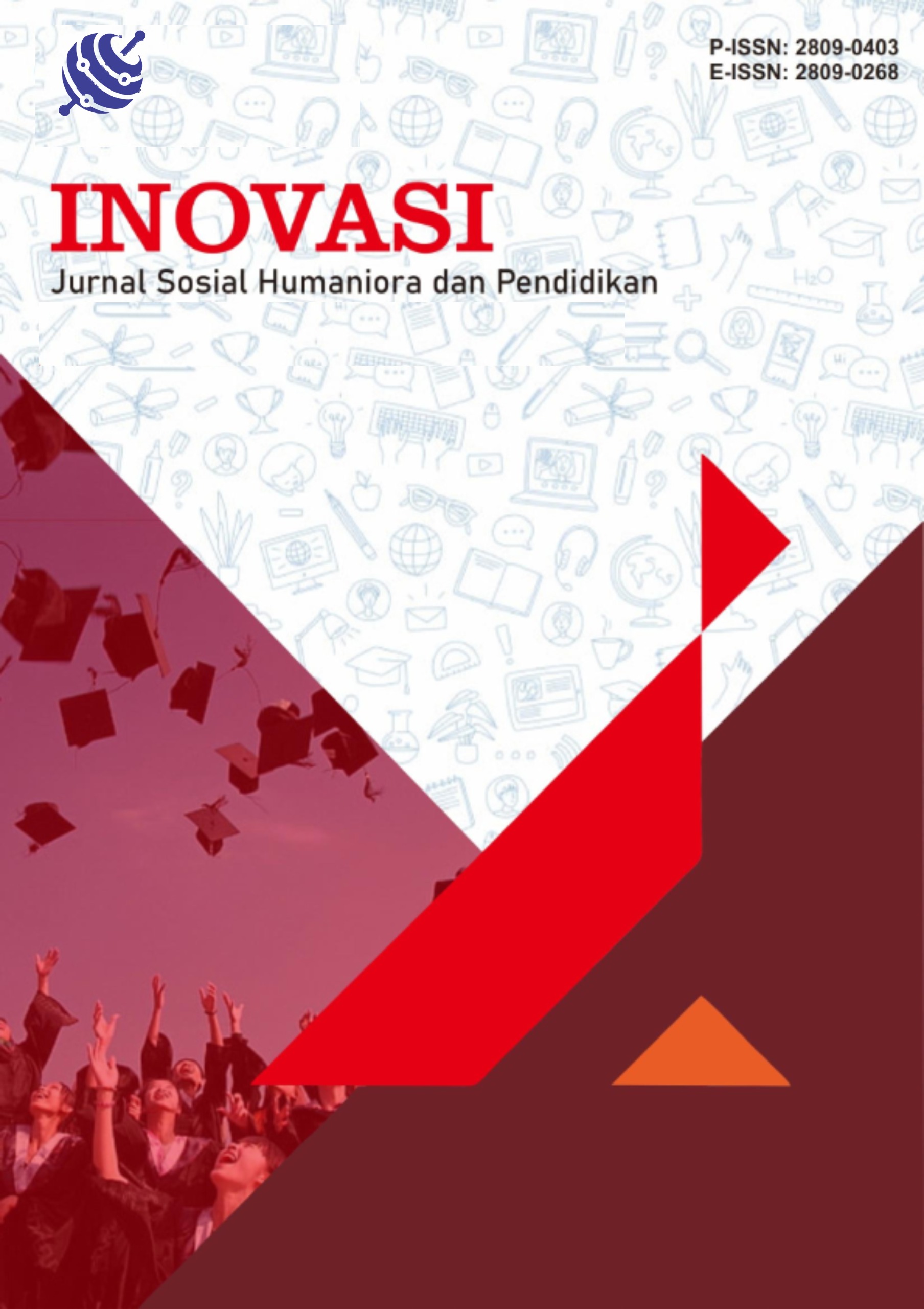Ornamentasi Seni Pertunjukan Etu Nagekeo Sebagai Bentuk Ekspresi Kerakyatan
DOI:
https://doi.org/10.55606/inovasi.v4i3.5283Kata Kunci:
Etu, Folk Expression, Performing ArtsAbstrak
Abstract. The diversity of popular expressions in performing arts is a tangible form of noble cultural heritage in various regions of Indonesia. The ornamentation of performing arts as a medium of expression has produced esteemed cultural rituals that deserve preservation across generations. The ethics of performing art ornamentation in each region carry distinctive characteristics, values, and norms, including the Etu Ritual in Nagekeo, East Nusa Tenggara. Etu, also known as the traditional boxing performance, represents a complex repertoire of movements, vocabulary, music, and religious entities. This study employs a qualitative ethnographic method with a semiotic approach to examine the structure, expression, and meaning of the Etu performance in Nagekeo. Research data sources are divided into two categories: primary and secondary. Four techniques of data collection are applied, namely participatory observation, in-depth interviews, documentation, and literature study. Data processing is conducted in three phases: data condensation, data presentation, and conclusion drawing. The objectives of this study are as follows: (1) to examine the history, development, and structure of performing arts within the Etu ritual of Nagekeo; (2) to analyze the ornamentation of performing arts in the Etu ritual of Nagekeo; and (3) to analyze the expression of popular culture within the Etu ritual of Nagekeo as part of the nation’s heritage.
Referensi
Abdullah, I. (2010). Konstruksi dan Reproduksi Kebudayaan. Pustaka Pelajar.
Arikunto, S. (2010). Prosedur Penelitian. (Rev. ed). Jakarta: Rineka Cipta.
Barker, Crish, dan Jane. (2016). Kajian Budaya, Teori, dan Praktik. Yogyakarta: Penerbiat Pustaka Pelajar.
Endraswara, Suwardi. (2017). Metodologi Penelitian Kebudayaan. Yogyakarta: Gadjah Mada University Press.
Halls, S. (1997) “The Work of Representation”, dalam S. Hall (ed). Representation: Cultural Representations and Sygnifying Practices. London: SAGE
Kahija YF La. (2017). Penelitian Fenomenologis Jalan Memahami Pengalaman Hidup. Yogyakarta: PT Kanisius (Anggota IKAPI).
Kasiyan. (2021). Metodologi Pendidikan Seni: dari Strukturalisme sampai Post-strukturalisme. UNY Press.
Mayor, Polak J.B.A.F. (1979). Sosiologi: suatu buku pengantar ringkas. Jakarta: PT Ichtiar Baru.
Neonbasu, Gregoe SVD, PH.D. (2021). Etnologi Gerbang Memahami Kosmos. Jakarta: Yayasan Pustaka Obor Mas Indonesia anggota IKAPI.
Pradoko, A.M.S. (2019). Metode Penelitian Kualitatik Beyond. Yogyakarta: Media Akademi
Rohidi, Tjetjep Rohendi. (2000). Kesenian dalam Pendekatan Kebudayaan. Bandung: STSI Bandung.
Satori, Djam’an & Komariah, Aan. (2013). Metode Penelitian Kualitatif. Bandung: Alfabeta.
Sugiyono. (2020). Metodologi Penelitian Kuantitatif, Kualitatif, dan R&D. Bandung: Alfabeta.
Sunardi, St. (2002). Semiotika Negativa. Kanal.
Sutiyono. (2012). Paradigma Pendidikan Seni di Indonesia (T. Setyawan (ed)).
Upitis, Rena. (2011). Arts Educations fot the Develompment of the Whole Child. Toronto: University Avenua.
Unduhan
Diterbitkan
Cara Mengutip
Terbitan
Bagian
Lisensi
Hak Cipta (c) 2025 Jurnal Sosial Humaniora dan Pendidikan

Artikel ini berlisensiCreative Commons Attribution-ShareAlike 4.0 International License.







